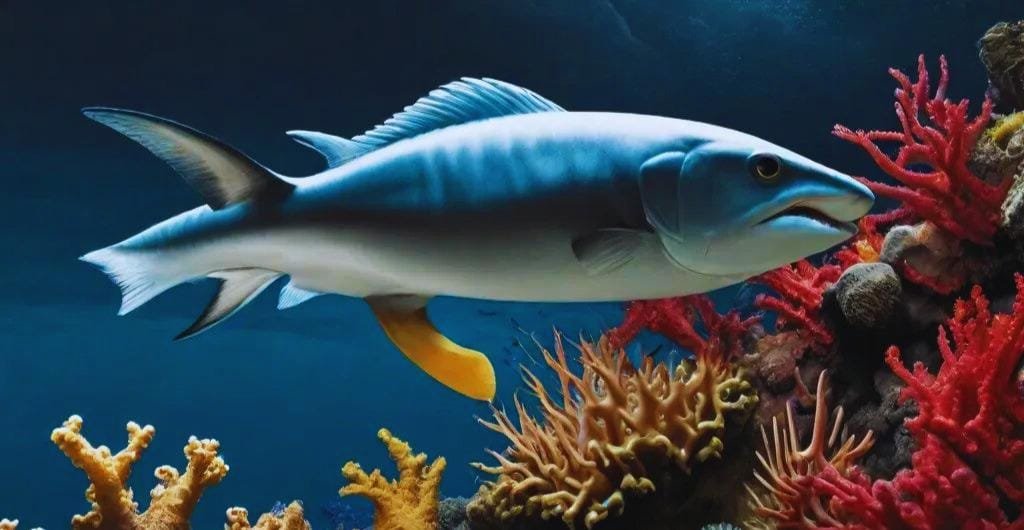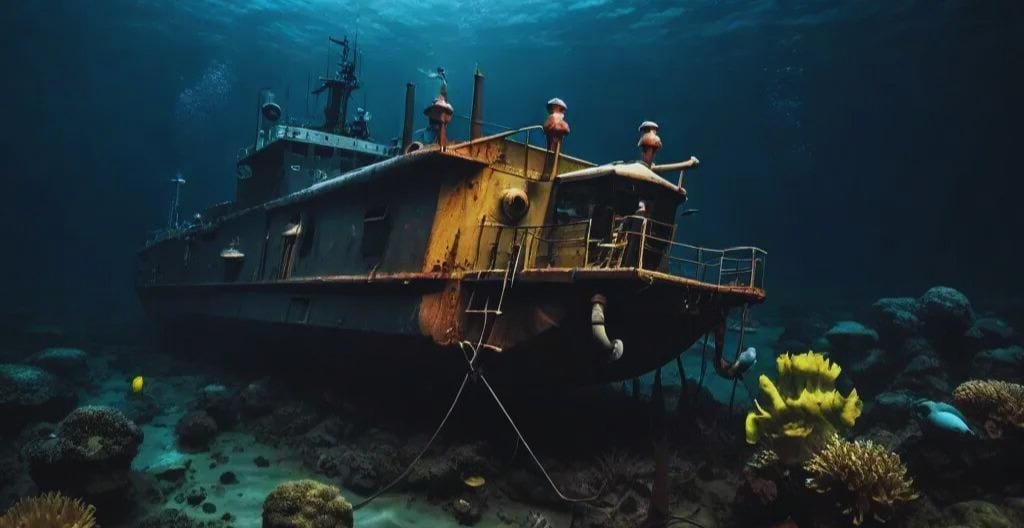In the lightless depths of our planet’s oceans—a realm more alien than the surface of the moon—life has evolved in ways that defy imagination. Creatures with translucent bodies, bioluminescent displays, and evolutionary adaptations so bizarre they seem plucked from science fiction, inhabit the deep sea. Yet for all our technological advancement, we’ve explored less than five percent of Earth’s oceans. The deep sea remains our planet’s greatest frontier, a vast expanse of unknown biodiversity where new discoveries emerge with virtually every research expedition.
The Abyss: Earth’s Final Frontier

The deep sea begins where sunlight fades completely, roughly 1,000 meters below the surface, and extends to the crushing pressures of the hadal zone in the deepest ocean trenches—nearly 11,000 meters down. Here, in perpetual darkness, temperatures hover just above freezing, and pressures can exceed 1,000 times that at sea level. These extreme conditions have historically made exploration tremendously difficult.
Scientists estimate that between 700,000 and 10 million species may inhabit the deep sea. The staggering uncertainty in this range speaks volumes about our limited knowledge. More astonishing still is the fact that new species are being discovered at unprecedented rates. A single research expedition to the Clarion-Clipperton Zone in the Pacific documented over 5,000 different species—a remarkable 90% of which were completely new to science.
“We know more about the surface of Mars than we do about the deep ocean floor,” remarks Dr. Helena Winters, marine biologist at the Oceanographic Institute. “And that’s not hyperbole—it’s literal truth. We have better maps of Mars than we do of our own seafloor.”
Evolution in Extreme Environments

Life in the deep sea has evolved under extraordinary selective pressures. Food scarcity, crushing pressure, and perpetual darkness have produced evolutionary innovations that push the boundaries of biological adaptation.
Take the anglerfish, perhaps the most iconic deep-sea denizen. Females sport a modified dorsal spine that dangles before their massive jaws, tipped with bioluminescent bacteria that serve as a living lure. Males, by contrast, are tiny parasites that permanently fuse to females, eventually losing their eyes, fins, and most organs until they become nothing more than sperm-producing appendages. This extreme sexual dimorphism represents one of the most dramatic adaptations in the animal kingdom.
Or consider the barreleye fish, with transparent heads and tubular, upward-facing eyes that can rotate within their transparent cranial shields. These remarkable adaptations allow them to detect the silhouettes of potential prey against the faint light from above.
The giant isopod—essentially a football-sized roly-poly—has evolved to go months or even years between meals. When food does appear, these creatures can consume so much that they become temporarily immobilized by their feast.
These adaptations, while seemingly fantastical, represent logical evolutionary responses to the deep sea’s unique challenges. Every bizarre feature serves a purpose, honed over millions of years of natural selection in Earth’s most extreme habitat.
Recent Discoveries That Rewrite the Textbooks
In just the past decade, deep-sea exploration has yielded discoveries that have forced scientists to reconsider fundamental biological concepts. The sheer pace of these findings suggests we’ve only scratched the surface of deep-sea biodiversity.
In 2020, researchers discovered a new species of ctenophore (comb jelly) that completely lacks the tentacles characteristic of its relatives. Instead, it captures prey using two wing-like lobes that engulf smaller organisms. This finding challenges our understanding of predation strategies in gelatinous deep-sea animals.

The “ghost octopus”—discovered in 2016 near Hawaii and officially named Casper after the friendly cartoon ghost—represents the deepest-dwelling octopus ever found, living at depths exceeding 4,000 meters. Unlike other octopods, it lacks pigment cells, rendering it ghostly white, and it lays eggs on dead sponge stalks—a previously unknown reproductive strategy for deep-sea cephalopods.
Perhaps most surprising was the 2018 discovery of over 100 new species of bacteria in the Mariana Trench that can break down hydrocarbons. These microorganisms may play crucial roles in carbon cycling and potentially offer new approaches to bioremediation of oil spills.
“Each expedition yields species completely unknown to science,” explains Dr. Marcus Chen, deep-sea ecologist. “We’re finding animals that challenge our understanding of physiology, taxonomy, and evolution—sometimes daily during a research cruise.”
The Challenge of Deep-Sea Exploration
Why does so much of the deep sea remain unexplored? The answer lies in the profound technical challenges of operating in this environment.
Pressure increases by one atmosphere for every 10 meters of depth. At the bottom of the Mariana Trench, pressures exceed 1,100 atmospheres—equivalent to balancing 50 jumbo jets on your fingertip. Few materials and technologies can withstand such forces.
Communication presents another obstacle. Radio waves, which enable surface exploration, cannot penetrate seawater. Acoustic signals travel underwater but provide limited bandwidth for data transmission. This communication barrier makes autonomous vehicle operation particularly challenging.
Then there’s the sheer vastness. The deep sea covers more than 60% of Earth’s surface, an expanse larger than all land masses combined. Systematically mapping and sampling this environment would require exponentially more resources than currently allocated to ocean science.
Despite these challenges, technological innovations are accelerating exploration. Autonomous underwater vehicles (AUVs) can now operate for months without surfacing. Advanced imaging systems, including 4K video and holographic cameras, capture unprecedented detail. Environmental DNA (eDNA) techniques allow scientists to detect species presence from water samples alone, revolutionizing biodiversity surveys.
The Peril of the Unknown

Our limited understanding of deep-sea ecosystems becomes particularly troubling as human activities increasingly impact these environments. Deep-sea mining operations targeting valuable minerals, commercial fishing extending into ever-deeper waters, and climate change altering ocean chemistry all threaten habitats we’ve barely begun to document.
The danger lies in potentially losing species before we’ve even discovered them. Many deep-sea organisms produce unique biochemical compounds with potential applications in medicine, materials science, and biotechnology. The antiviral drug Acyclovir, for instance, was developed from compounds found in deep-sea sponges. How many potential cures for human diseases might we lose before identifying them?
Moreover, deep-sea ecosystems provide critical services including carbon sequestration and nutrient cycling that influence global climate patterns. Disrupting these systems could trigger cascading effects throughout marine food webs, with consequences reaching far beyond the abyss.
“We’re essentially conducting a planetary-scale experiment without understanding the baseline conditions,” warns Dr. Eliza Montgomery, marine conservation biologist. “How can we possibly predict outcomes when we don’t know what’s there in the first place?”
The Race Against Time
A sense of urgency now permeates the field of deep-sea biology. Researchers race to document biodiversity before human activities potentially eliminate species. International initiatives including the Deep Ocean Observing Strategy (DOOS) and the Seabed 2030 project aim to accelerate exploration and mapping efforts.
Substantial challenges remain. Funding for basic ocean science constitutes a tiny fraction of space exploration budgets, despite the oceans’ greater proximity and direct relevance to human survival. And while technological advances continue to reduce exploration costs, comprehensive deep-sea surveys remain prohibitively expensive for many nations.
Yet the scientific community maintains cautious optimism. Public fascination with deep-sea discoveries creates opportunities for citizen science engagement and educational outreach. Collaborative international research initiatives pool resources and expertise. And increased recognition of the deep sea’s importance to planetary health has begun shifting policy discussions toward conservation.
Conclusion
The deep sea represents Earth’s last great frontier of biological discovery—a realm where new species await documentation, evolutionary innovations challenge our understanding of life’s adaptability, and ecosystem processes influence global climate patterns. Our limited exploration of this environment means countless organisms remain unknown to science, their ecological roles and potential benefits to humanity undiscovered.
As technology advances and expedition costs decrease, we stand at the threshold of a golden age of deep-sea exploration. But this opportunity comes with profound responsibility. We must balance scientific curiosity and resource utilization with conservation, ensuring these ancient ecosystems persist long enough for us to understand their complexity.
The deep sea holds secrets accumulated over billions of years of evolution in Earth’s most extreme environment. Each new discovery not only expands our scientific knowledge but also deepens our appreciation for life’s remarkable diversity and resilience. In mapping the ocean’s depths, we ultimately explore the boundaries of life itself—and perhaps gain insight into our place within it.
FAQ
How many undiscovered species might exist in the deep sea?
Conservative estimates suggest at least 500,000 undiscovered species, though some marine biologists believe the number could reach into the millions. The uncertainty stems from both limited sampling and disagreements about what constitutes a species, especially among microbial life. Recent expeditions consistently find that 80-90% of collected specimens represent species new to science, indicating we’ve only documented a small fraction of deep-sea biodiversity.
What technologies are advancing deep-sea exploration?
Several breakthrough technologies are transforming deep-sea research. Autonomous underwater vehicles (AUVs) can now operate for months without surfacing, reaching previously inaccessible depths. Environmental DNA sampling allows scientists to detect species from water samples alone, without visual confirmation. High-pressure laboratory systems enable researchers to maintain deep-sea organisms at their native pressures for study. And advances in machine learning help process the enormous datasets generated by modern sensor arrays and imaging systems.
Why should we care about deep-sea organisms if we never see them?
Though invisible to most people, deep-sea ecosystems provide critical services including carbon sequestration, nutrient cycling, and fisheries support. Many commercial fish species depend on deep-sea food webs during some life stages. Additionally, deep-sea organisms produce unique biochemical compounds with applications in medicine—several current pharmaceuticals originated from deep-sea species. Understanding these ecosystems is essential for predicting how climate change will affect global ocean processes that influence weather patterns, food security, and coastal communities.
How do animals survive the crushing pressure of the deep sea?
Deep-sea organisms employ several adaptations to withstand extreme pressure. Their cell membranes contain specific fatty acids that maintain flexibility under pressure. Many species incorporate pressure-resistant proteins called piezolytes that prevent vital cellular machinery from collapsing. Rather than air-filled swim bladders, deep-sea fish often use oily compounds for buoyancy control. Additionally, their tissues contain high concentrations of trimethylamine oxide (TMAO), which prevents protein distortion under pressure—a property that explains why deep-sea fish often have that distinctive “fishy” smell when brought to the surface.
What are the biggest threats to deep-sea ecosystems?
The primary threats include deep-sea mining for valuable minerals, bottom trawling that destroys seafloor habitats, plastic pollution that has now been found even in the deepest ocean trenches, and climate change effects including ocean acidification and deoxygenation. These impacts are particularly concerning because deep-sea ecosystems typically recover very slowly due to cold temperatures, limited food, and the naturally slow growth and reproduction rates of many deep-dwelling species. Damage inflicted today may persist for decades or even centuries.

